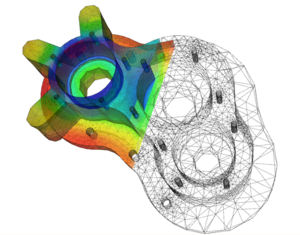Differential equation (nonfiction): Difference between revisions
No edit summary |
No edit summary |
||
| Line 23: | Line 23: | ||
* [[Equation (nonfiction)]] | * [[Equation (nonfiction)]] | ||
* [[Function (nonfiction)]] | * [[Function (nonfiction)]] | ||
* [[Linear differential equation (nonfiction)]] | |||
* [[Mathematics (nonfiction)]] | * [[Mathematics (nonfiction)]] | ||
* [[Physics (nonfiction)]] | * [[Physics (nonfiction)]] | ||
Revision as of 06:02, 26 August 2018
A differential equation is a mathematical equation that relates some function with its derivatives. In applications, the functions usually represent physical quantities, the derivatives represent their rates of change, and the equation defines a relationship between the two.
Because such relations are extremely common, differential equations play a prominent role in many disciplines including engineering, physics, economics, and biology.
In pure mathematics, differential equations are studied from several different perspectives, mostly concerned with their solutions—the set of functions that satisfy the equation. Only the simplest differential equations are solvable by explicit formulas; however, some properties of solutions of a given differential equation may be determined without finding their exact form.
If a self-contained formula for the solution is not available, the solution may be numerically approximated using computers.
The theory of dynamical systems puts emphasis on qualitative analysis of systems described by differential equations, while many numerical methods have been developed to determine solutions with a given degree of accuracy.
In the News
Fiction cross-reference
Nonfiction cross-reference
- Equation (nonfiction)
- Function (nonfiction)
- Linear differential equation (nonfiction)
- Mathematics (nonfiction)
- Physics (nonfiction)
External links:
